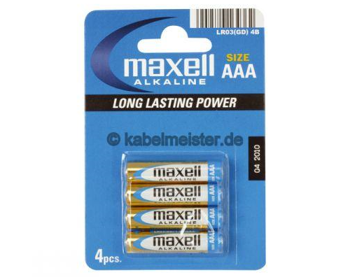alkali manganese battery (ZnMnO2)
Alkaline manganese batteries (ZnMnO2) belong to the primary cells and operate with an alkaline electrolyte. The negative electrode, the cathode, consists of zinc, which serves as the active substance for the electrochemical conversion. The electrical energy is generated by the oxidation of the zinc and the reduction of the manganese oxide. In the case of the anode, it is manganese dioxide (MnO2) or manganese dioxide. A potassium hydroxide solution is used as the electrolyte.
The nominal voltage is the difference between the voltage values of the electrochemical voltage series for zinc and manganese oxide and is 1.5 V. The terminal voltage at a discharge current of 0.5C( coulomb) is 1.14 V, and the final discharge voltage is 1.0 V.
Alkaline manganese batteries are commonly used batteries. They have high performance and energy density and can be developed to suit specific applications. For example, for long life with low current draw or for high current draw and lower life in return. The designs differ in the thickness and the performance of the cathode, High Performance Cathode( HPC), a larger cell volume or a different electrolyte.

